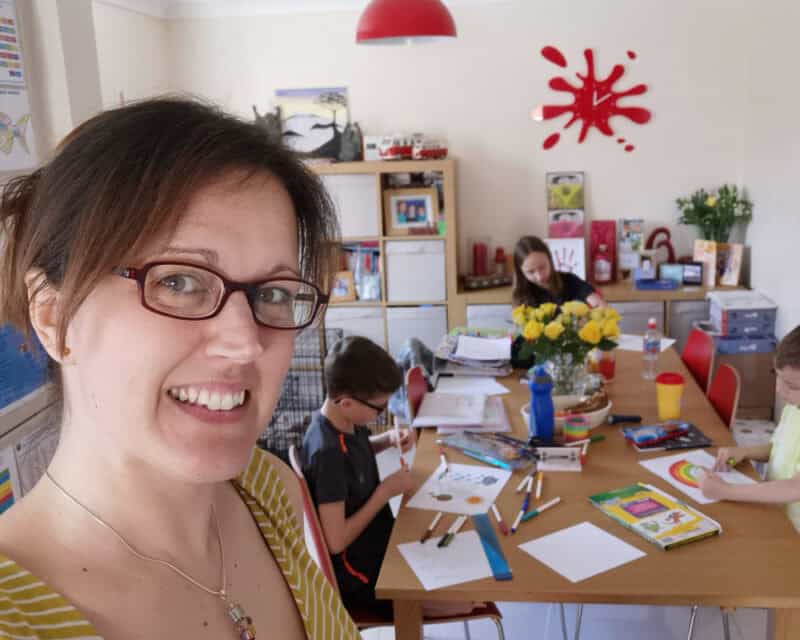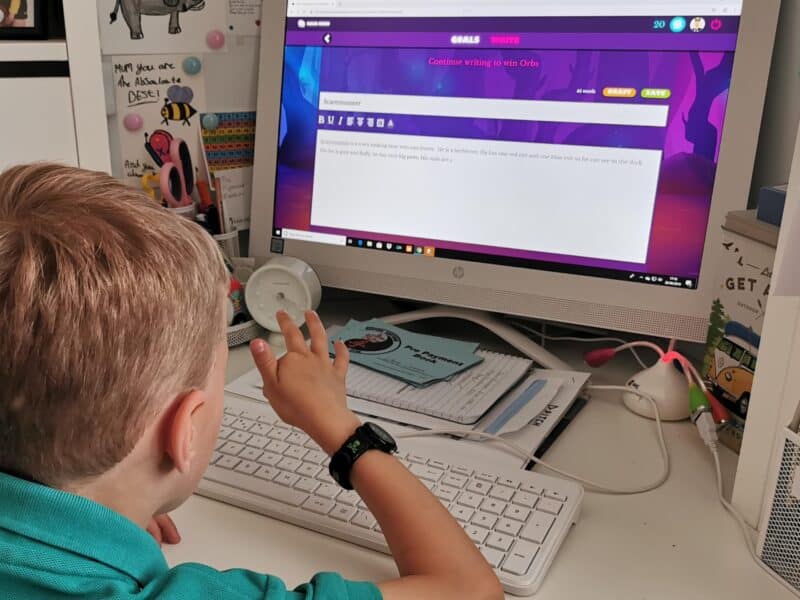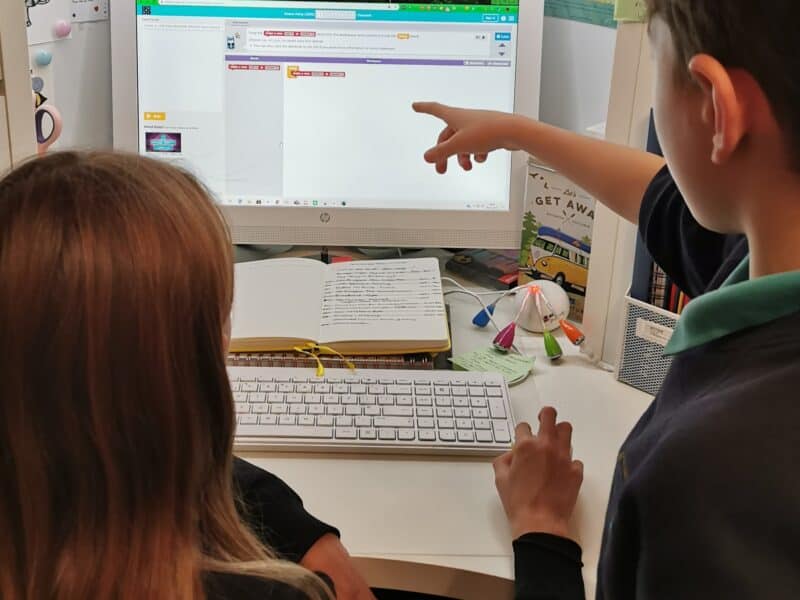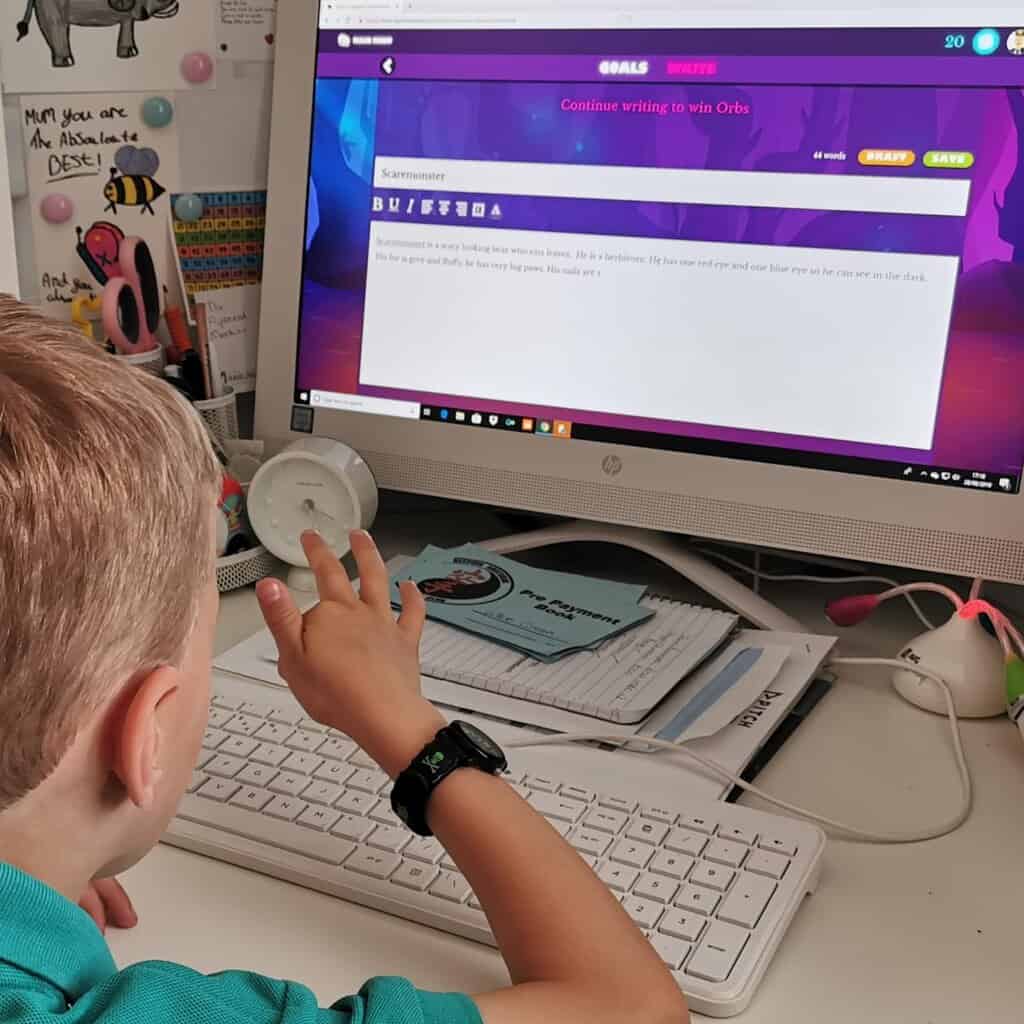As a parent who’s researched educational options extensively for my children, I discovered that hybrid homeschooling offers an intriguing balance between traditional school structure and the personalisation of home education. Although I ultimately kept my children in the conventional school system, I delved deeply into the hybrid model during my research and later applied many of these principles when home educating during the Covid lockdowns. In this article, I’ll share how to develop an effective hybrid homeschool program that combines the best of both worlds while catering to your child’s unique learning style.
What is Hybrid Homeschooling and Why Consider It?

Hybrid homeschooling combines traditional school attendance with at-home learning. Your child goes to school for part of the week (typically two days a week) and learns at home during the remaining days. This hybrid model provides structure while allowing for personalised learning experiences that simply aren’t possible in a full-time traditional classroom.
The benefits of hybrid homeschooling became clear to me during my research:
- It offers flexibility around your family’s schedule
- Children receive individualised attention during home days
- Parents can tailor the curriculum to their child’s interests and learning pace
- Children still get social interaction with teachers and peers
- Families can create a learning environment free from distractions
The Advantages of Hybrid Homeschooling Over Traditional School
Before diving into how to create a personalised learning plan, I want to share why I believe this hybrid homeschool approach works well for many families. The traditional school environment certainly has benefits, but through my research and experience during lockdowns, I found the hybrid learning model addresses many common concerns.
Benefits of Hybrid Homeschooling
In my exploration and temporary experience with home education, hybrid homeschooling offers exceptional flexibility while maintaining academic rigor. Children attend school enough to build social skills and learn from professional educators, but also have the space to dive deeper into subjects of interest at home.
The hybrid school model allows students to:
- Learn at their own pace
- Explore topics beyond the standard curriculum
- Develop independence and self-discipline
- Avoid burnout from full-time classroom days
- Participate in extracurricular activities with more flexibility
Homeschooling parents often worry about providing adequate social opportunities, but the hybrid model ensures regular interaction with peers while still allowing for the personalisation of home learning.
How to Create a Personalised Learning Plan for Hybrid Homeschooling
Now, let’s get practical. Developing a personalised learning plan for hybrid homeschooling requires thoughtful consideration of your child’s needs and interests. Here’s the process I researched and partially implemented during lockdowns:
1. Understand Your Child’s Learning Style
Before planning anything, take time to observe how your child naturally learns. Does your child thrive in a hybrid learning environment with structure, or prefer more open-ended exploration? Understanding different learning styles helps design activities that will engage rather than frustrate.
During lockdowns, I noticed my children:
- Excelled with hands-on projects
- Needed short breaks between focused work
- Responded well to visual learning materials
- Required extra time for certain subjects
This knowledge became the foundation of our temporary personalised learning experience and would be essential for any hybrid homeschooling plan.
2. Align with School Curriculum
One advantage of hybrid homeschooling is the ability to complement what’s happening during school days. Regular communication with your child’s teachers helps understand what they’re covering so you can:
- Reinforce challenging concepts at home
- Extend learning in areas where your child shows particular interest
- Prepare for upcoming school work
- Ensure there’s no redundancy between school and home learning
This coordination between school and home makes the entire learning process more cohesive.
3. Set Clear Goals and Objectives
For a successful hybrid homeschooling journey, you need clear objectives. Setting both short-term and long-term goals that are:
- Specific and measurable
- Aligned with your child’s grade level requirements
- Flexible enough to adapt as needed
- Focused on both academic and personal growth
These goals help track progress and make adjustments to your personalised learning plan.
4. Create a Designated Learning Space
The physical environment significantly impacts learning. Creating a designated learning space that:
- Is comfortable but minimises distractions
- Contains all necessary supplies
- Features flexible seating options
- Displays educational materials and inspiration
- Can be easily reconfigured for different activities
This dedicated area helps your child transition into “learning mode” during home days.
5. Develop a Flexible Schedule
While structure is important, the flexibility of hybrid schooling is one of its greatest benefits. A well-developed schedule:
- Maintains consistent wake-up and learning times
- Alternates between focused study and creative activities
- Includes outdoor time and physical movement
- Allows for deeper exploration when interest is high
- Can be adjusted based on energy levels and comprehension
On school days, ensure your child has downtime after returning home, while home days follow your established routine.
6. Incorporate Multiple Resources

One of the benefits of homeschooling is not being limited to a single textbook. A personalised approach includes:
- Online learning platforms that complement school materials
- Library books on current topics of interest
- Educational apps and videos
- Hands-on manipulatives and experiments
- Field trips related to studies
Blended learning allows you to mix digital and physical resources to create an engaging curriculum.
7. Connect with Other Homeschooling Families
The hybrid homeschool community can be invaluable to your journey. Connecting with other homeschooling families allows you to:
- Share resources and lesson plans
- Organise group activities and field trips
- Discuss challenges and solutions
- Provide social opportunities for your child
- Stay informed about homeschooling laws and requirements
Finding a supportive online community helps navigate towards hybrid homeschooling with confidence.
Personalising Your Hybrid Homeschool Program
The true power of hybrid homeschooling lies in personalisation. Here’s how to tailor your program to ensure that your child thrives in a hybrid learning environment:
Focus on Strengths and Interests
Make learning meaningful by connecting it to your child’s interests. For example, when studying history, you might:
- Read historical fiction set in the time period
- Visit relevant museums or historic sites
- Create projects that incorporate your child’s artistic abilities
- Connect historical events to current interests
This personalised approach makes even challenging subjects more engaging.
Address Specific Learning Needs
Every child has areas where they need extra support. In the hybrid homeschooling model, you can:
- Spend additional time on difficult concepts
- Try different teaching approaches until something clicks
- Adjust the pace to ensure mastery before moving on
- Seek outside resources for areas outside your expertise
This individualised attention is difficult to achieve in a traditional school setting.
Balance Structure and Exploration
While your hybrid learning plan should include required subjects, also build in time for:
- Project-based learning that crosses multiple disciplines
- Child-led exploration of topics of interest
- Real-world application of skills
- Creative expression and problem-solving
This balance helps maintain motivation and enthusiasm for learning.
Evaluating Your Hybrid Homeschooling Journey
As with any educational approach, regular assessment helps ensure the hybrid homeschooling experience is successful. Periodically:
- Review learning goals and adjust as needed
- Celebrate achievements and progress
- Identify areas that need more attention
- Gather feedback from your child about what’s working
- Consider whether the balance between school and home is optimal
This ongoing evaluation helps your hybrid homeschool program evolve with your child’s changing needs.
Final Thoughts on Creating a Personalised Hybrid Homeschooling Plan

As the world of education continues to evolve, hybrid homeschooling offers a flexible and personalised alternative that combines the best aspects of traditional school with the benefits of homeschooling. Creating a personalised learning plan requires thought and effort, but the rewards can be tremendous.
My research into hybrid homeschooling and experience during lockdowns taught me that there’s no one-size-fits-all approach to education. By thoughtfully designing a program that honors your child’s learning style, interests, and needs, you can help them flourish academically and personally.
If you’re considering hybrid homeschooling, take the time to develop a personalised plan that leverages both school and home learning environments. With the right approach, hybrid homeschooling allows students to receive the structure and socialisation of traditional education while benefiting from the customisation and flexibility that homeschooling offers.
Have you explored hybrid homeschooling for your family? I’d love to hear about your experiences in the comments below!

